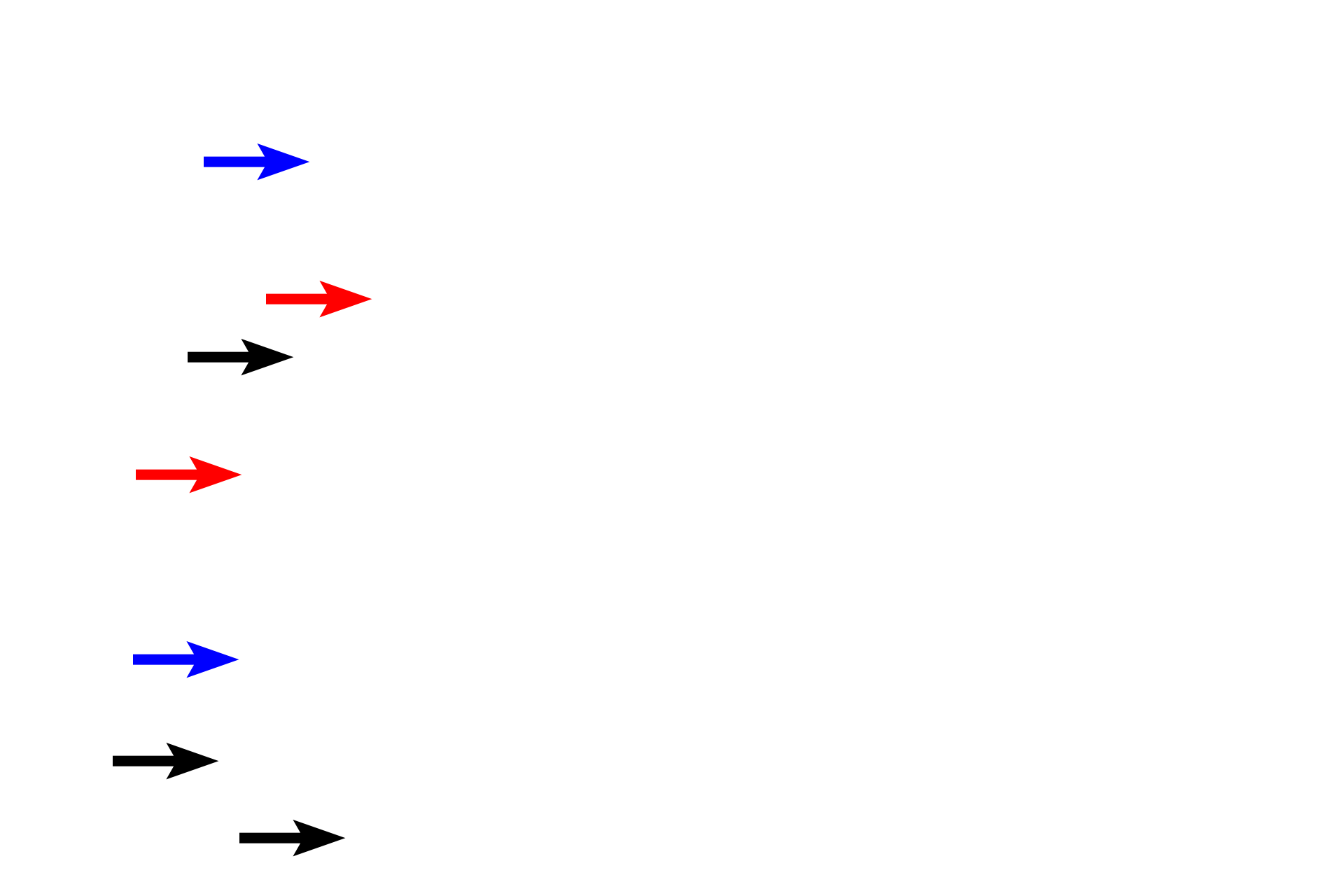
Overview
These images compare connective proper (two left panels) with cartilage. Cartilage is a connective tissue, and thus consists of cells and an extracellular matrix of fibers and ground substance. However, cartilage differs from connective tissue proper by having an abundant, flexible, semi-rigid matrix and a limited variety of cell types. The physical properties of the matrix allow cartilage to provide bendable, non-compressible support. Cartilage is avascular and interior cells receive nutrients by diffusion. 800x, 400x, 400x

Loose connective tisssue >
Loose connective tissue is characterized by having delicate collagen fibers (blue arrows), many and various cell types (black arrows), and a gelatinous ground substance (red arrows). Loose connective tissue provides for diffusion and padding but little strength.

Dense connective tissue >
Dense connective tissue is characterized by its large collagen fiber bundles (blue arrows), relatively few cells (mostly fibroblasts) (black arrows) and minimal, gelatinous ground substance (green arrows). Because of the high tensile strength of collagen fibers and limited ground substance, dense connective tissues provides great multidirectional strength and resistance.

Cartilage >
Cartilage possesses an abundant extracellular matrix of fibers and a flexible, rubbery ground substance. The unique properties of cartilage are provided by its non-compressible ground substance and fiber content. This image shows an example of hyaline cartilage, one of the three types of cartilage and is the most prevalent.

- Chondrocytes >
Throughout the extracellular matrix are cartilage cells, called chondrocytes. They reside in small spaces called lacunae and secrete the components of the matrix. Chondrocytes are the only cell type in the matrix.

- Extracellular matrix >
As with all connective tissues, the matrix consists of a ground substance and fibers, which vary among the three types of cartilage. This example of hyaline cartilage contains Type II collagen fibers which are not visible in this image. Ground substance is frequently abundant, accounting for more than 90% of cartilage.